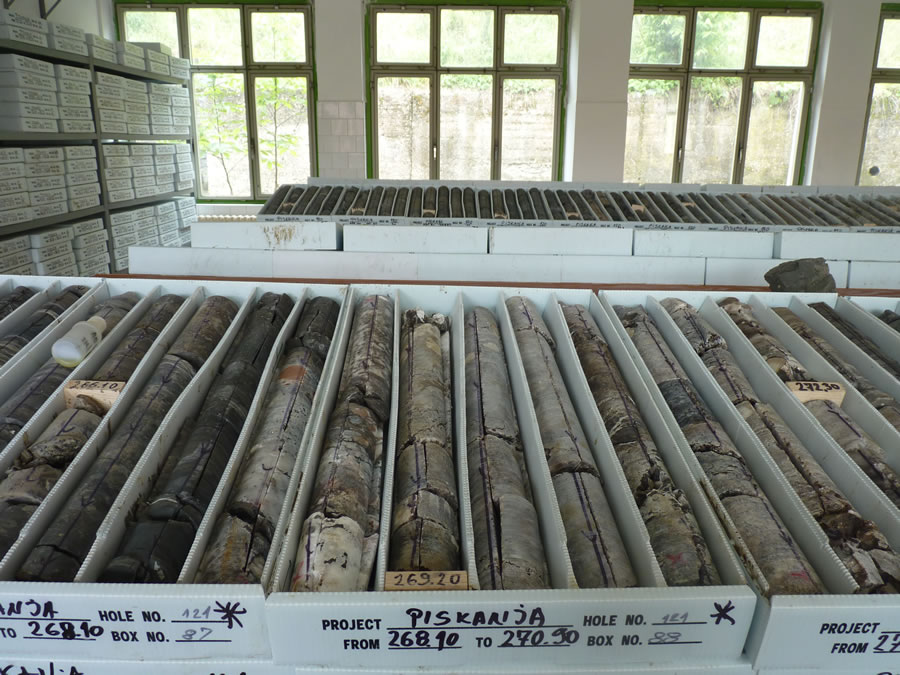Erin Ventures advancing Serbian boron project

By Ellsworth Dickson
Erin Ventures Inc. [EV-TSXV; EKV-Berlin] has a 100% interest in the Piskanja Boron Project located 160 km south of Belgrade, southern Serbia.
Boron is not a well-known mineral; however, it is used in over 500 products, including your cell phone and iPad glass and other glass products, fibreglass, ceramic glazes, porcelain enamels, fertilizers, wood preservatives, lithium battery production, stealth technology, magnets, superhard materials, insecticides, bleach and semi-conductors, to name a few.
In an interview with Resource World, Tim Daniels, President and CEO, said, “Like most countries, due to the coronavirus, Serbia has gone into a lockdown mode so all field operations have ceased. This has not affected us because, in January, for our current application for an exploitation licence, our work is now desktop and not in the field. It is analysis and compilation of studies in preparation for a submission to the government for the first step in their approval for a mining licence. In any event, we were not planning a robust field program this year.”
He noted that when field operations were suspended, the company was about two weeks away from stopping work. Some re-logging of some drill core has been taking place.
Daniels said that, like any other industrial mineral, the key to success is obtaining market share and not just having a mining operation. “The boron sector is an oligopoly controlled by very few companies who have divided up the world among themselves,” he said. “For us, as a new entrant into that marketplace, for the last couple of years, we needed to know where in that market our place will be and what portion of global demand we will be able to fulfill. So, of course, it’s important for us to understand our place in the market because it would impact how our mining operation is planned.”
For the past couple of years, Erin has been in discussions and due diligence with potential joint venture partners with a view to bringing the project forward. “In addition to finding a partner with deep pockets, it would be good to have a partner with hands-on mining experience, although our team does have mine development experience,” said Daniels. “We would also want a partner with experience in the boron sector – maybe a company that is producing a boron derivative such as boric acid, boron fertilizers, wood preservatives or one of the many products made with boron. He said that another possibility is a partner that would want their own secure boron supply for their own boron products.
Daniels pointed out that there could be three boron revenue streams from the Piskanja Boron Project based on the type of mineralization. “The bulk of our mineralization is the calcium-based borite (colemanite). Colemanite is one of the most valuable boron minerals because, in addition to making boric acid, it is used to make glass and fibreglass. Manufacturers just want the raw colemanite mineral itself.”
He pointed out that about three-quarters of the Piskanja deposit is colemanite. “All we have to do is mine it, crush it and bag it.”
The second mineral of interest is ulexite which is a combination, or hybrid, of colemanite and sodium borite. Ulexite is used to make fertilizer. Many soils in the world are deficient in boron. Crop yields increase dramatically by adding boron to the fertilizer mix with ulexite being the favored boron mineral.
The third product, and the one that Erin would bring on stream last, is boric acid – the most expensive and complex to produce and with the most competition.
The company has planned a production rate of 200,000 tonnes per year of boron products and about 25,000 tonnes of boric acid production. “We expect the certification of reserves to be submitted to the Serbian government this fall and expect approval about 60 days after that,” said Daniels. “The second step is obtaining the actual exploitation licence by submitting a Serbian feasibility study as well as an environmental baseline study. Prior to the coronavirus, we were looking at completing this by August 2021. The third and final step of the licencing process is the mine construction approval which is expected to take about a year into September 2022 when mining operations would begin.”
It is anticipated that mine construction would take about 24 months of the underground and surface development. Full production is expected by summer of 2024. The boron deposits are evaporites occurring in lenses that would be mined by underground methods.
